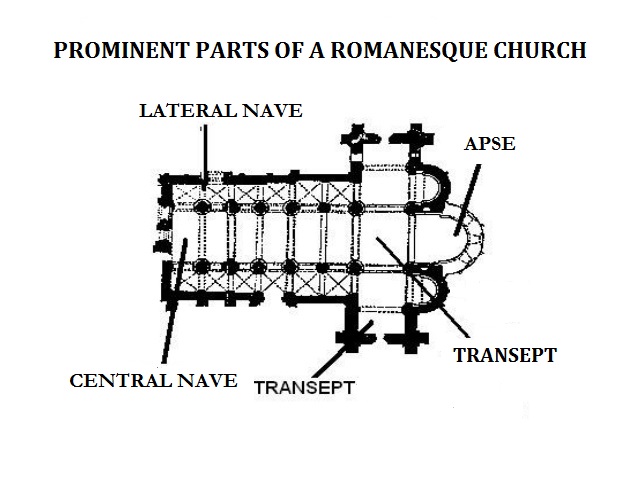

The Romanesque art emerges in Europe due to the spiritual renewal that takes place in the XI century at the continent. Romanesque art was above the values of the new feudal society, a society that was both warlike and Christian.
From the exclusively architectural point of view the Romanesque art was a continuous effort to build lasting temples with the greatest possible grandeur but avoiding their possible destruction.
The first constructions were made in Lombardy, Burgundy and Normandy. From there it spread throughout Europe, due to:
- Expansion of the religious Orders (Cluny and Cister) that build monasteries. These are source of wealth and cultural and urban center of the society.
- The pilgrimages. (In Spain the Romanesque is introduced through the “The way of St. James”).
- Increased influence of the church.
TYPES OF BUILDINGS
The main buildings of Romanesque architecture were: churches, monasteries and cathedrals.

CONSTRUCTION ELEMENTS
MATERIALS.
The basic materials used in Romanesque architecture are:
- Stone of ashlar or ashlar: stone block carved like a parallelepiped.
- Checker work: unturned or coarse carved stone.
SUSPENSION ELEMENTS: ARCHES, COLUMNS AND PILLARS.
- Arches: the arch used in Romanesque architecture is the round arch (semi-circular) and rectangular section.
- Columns: the column and the pillar are the architectural elements essential to receive the weight of the superior structures (arches and vaults). The column is composed of base, shaft and capital. The capital is usually figurative or of vegetal motif.
- Pillars: the pillar was widely used as a support, although it adopted different modalities. The most frequent was the variety of cruciform pillar (Greek cross section) or even more, the cruciform pillar.
SUSTAINED ELEMENTS: VAULT.
The vault is a curved factory work that serves to cover the space between two walls or between several pillars.
In the period of full Romanesque the most used vault to cover the main nave of the temple is the half-barrel vault.
© Copyleft 2016, Content and Language Integrated Learning and ICT Group